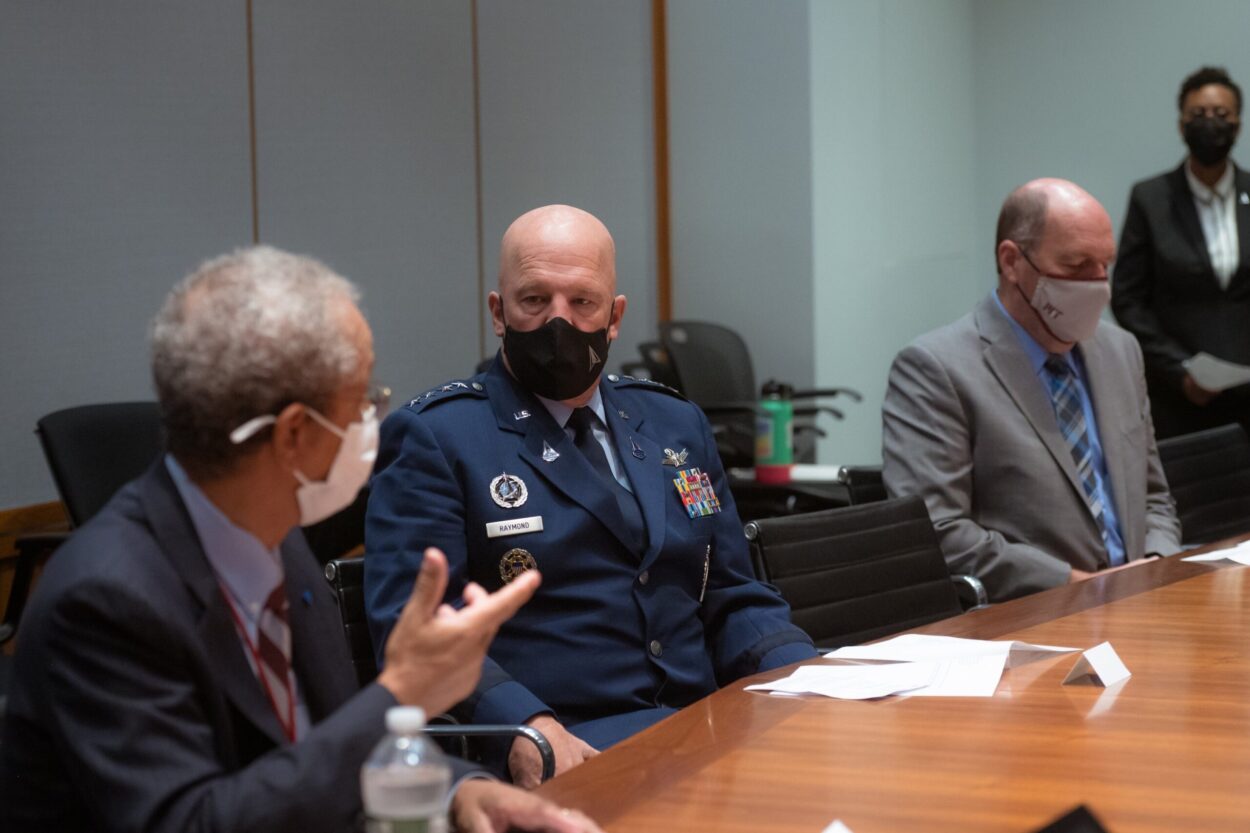Advancing human understanding and exploration in space is a long-standing pursuit of researchers and students at MIT. For the U.S. military, space technologies and discovery have wide-ranging implications on national security. With that history and context in mind, the MIT Department of Aeronautics and Astronautics (AeroAstro) hosted an on-campus event on Aug. 31, marking a new research engagement between MIT and the United States Space Force (USSF) to explore mutual interests and identify opportunities in research and education.
As global access to space increases, so does the need to protect the systems in Earth orbit that power much of the technology modern society relies on, such as GPS, telecommunication, and more.
“This engagement will lead to exciting advances in space systems and technology through research, a diverse educational pipeline of students who become guardians, and so much more. The sky is not our limit as we pursue these mutual interests together,” says Daniel Hastings, associate dean of engineering for diversity, equity, and inclusion, head of AeroAstro, and Cecil and Ida Green Education Professor. “This marks an exciting first step to apply our commitment to technical excellence and our passion for space to contribute to national security. This new arrangement is a win-win for all of us — for AeroAstro, MIT Lincoln Laboratory, and the U.S. Space Force.”
Gen. John W. “Jay” Raymond, chief of space operations for the USSF, met with Hastings, members of AeroAstro faculty, representatives of MIT Lincoln Laboratory, and MIT Provost Martin Schmidt to discuss the importance of space as a domain for national defense, the USSF’s newly-created University Partnership Program, and MIT’s ongoing interest in space research, education, and innovation. During the event, Raymond and Schmidt signed a memorandum of understanding between MIT and the USSF to explore opportunities for engagement.
“MIT’s relationship with the military is a fundamental element of its history,” said Schmidt during his opening remarks. “While the challenges and technologies have changed over time, MIT’s commitment to military research partnerships has not. Our work together has helped to keep America safe while holding to the Institute’s core mission and values.”
When the USSF was established as an independent military branch in late 2019, one of the highest priorities was building out the workforce to carry out its strategic mission. But to meet the complex, highly technical challenges inherent to the space environment, the guardians — military and civilian employees of the Space Force — that comprise their workforce would require specialized education and training to operate in a science, technology, engineering, and math (STEM)-focused domain.
To address this need, the USSF created the University Partnership Program, which aims “to recruit, educate, develop, and retain a competent, diverse, and inclusive workforce who possess the technical expertise to develop, field, and operate the world’s most advanced systems,” according to USSF promotional material. MIT is one of 11 academic institutions from around the country selected for the inaugural cohort of participants in the program based on the quality of STEM degree offerings and space-related research programs; a strong ROTC presence; a diverse student population; and degrees and programming designed to support military veterans and their families.
In addition to AeroAstro, MIT is a hub for space-relevant research and education. Lincoln Laboratory, a Department of Defense federally-funded research and development center, is outfitted with secure facilities to support classified projects. In addition, the Center for International Studies has a policy-related Security Studies Program. The Institute’s culture of interdisciplinary collaboration also creates the opportunity to leverage expertise in a wide range of relevant fields such as computer science, communications, cybersecurity, nuclear science, materials science, design, and artificial intelligence.
“We are trying to custom-build the first new military service since 1947 when the Air Force became independent from the Army. We knew we needed to up our STEM focus, and in my opinion, there is no better place to do that than MIT,” said Raymond. “We look forward to exploring this relationship together, and we can’t thank MIT enough for what this collaboration is going to mean to us in the future.”
To conclude his visit, Raymond met with cadets from the MIT Air Force Reserve Officers’ Training Corps (ROTC) and spoke with them about his career and his personal experience in the ROTC. He also fielded questions about leadership and the challenges and opportunities of building a new branch of the military.
